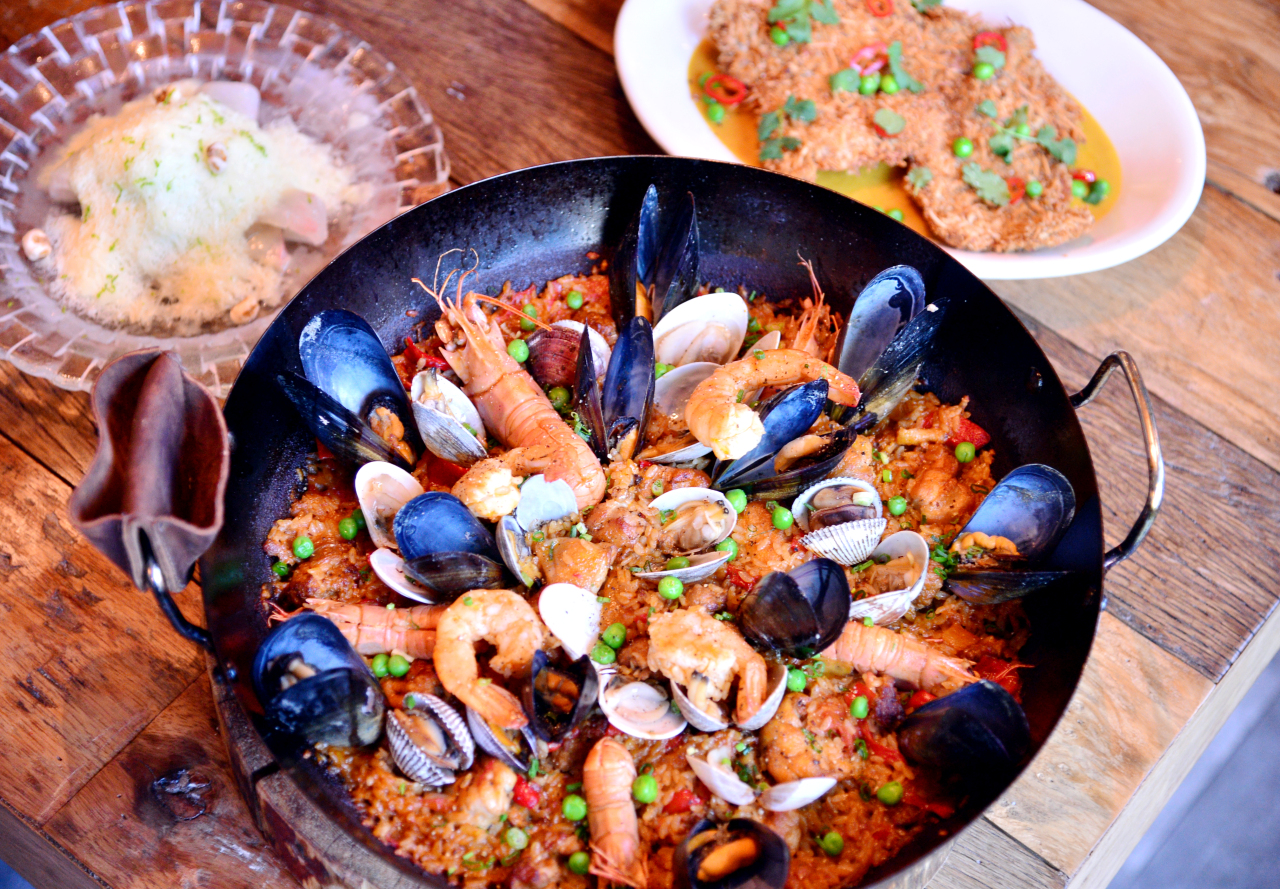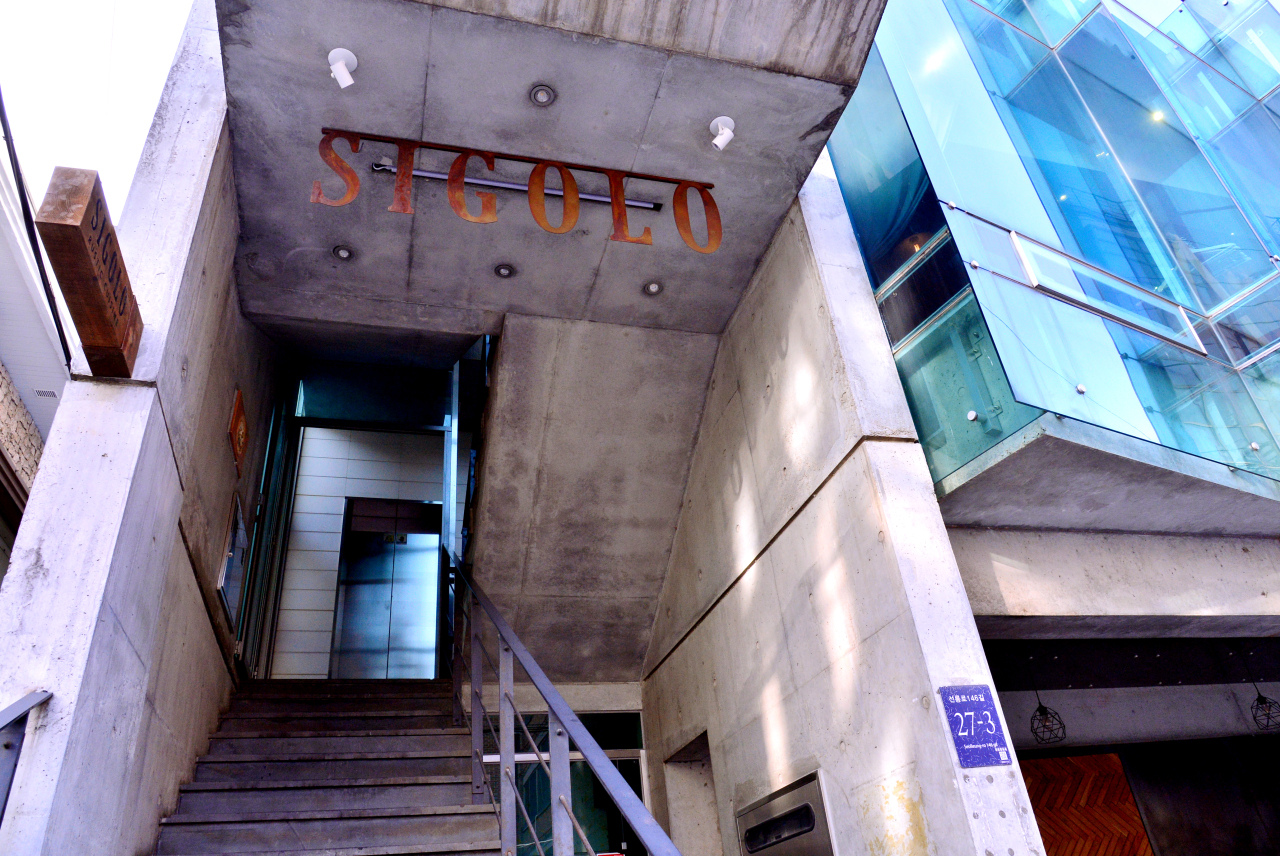Paella and other crowd-friendly eats at Sigolo
Veteran chef focuses on multicultural comfort food
By Jean OhPublished : Jan. 31, 2020 - 10:55

The paella at Sigolo, a newly minted restaurant in Cheongdam-dong, Seoul, sums up the best qualities of this new fine casual addition to the city’s dining scene.
Served in what appears to be a 17-inch pan, this dish meant to serve two is large enough for several diners to dig into.
Hearty and fragrant with garlic and onion, each grain of rice has soaked up the nutty and fresh flavors of the clam, mussel and crustacean broths used to craft this Spanish classic.
Sigolo’s paella mixta features plenty of in-house chorizo, seasoned chicken, clams, mussels, shrimp, red-banded lobster and peas to go around, but for rice fiends the real crowd pleaser is at the bottom of the pan, where one can dig up spoonfuls of crisp, crunchy socarrat, that tasty crust of rice also known as “nurungji” here.
“I am very serious about socarrat,” said Sigolo owner-chef Lee Kyung-ho, 38. “You need to use a thin pan to get that crust.”
Lee revealed he sticks to some key basics for his paella -- not only does he use the right pan to create his ideal socarrat, he also makes sofrito, an intense tomato sauce, flavoring it with smoked paprika to create Sigolo’s variation of this well-known Spanish dish.
He added he uses “just a pinch” of prized saffron.
While the dishes veteran chef Lee serves at Sigolo span many countries’ cuisines, his international repertoire is bridged by one unifying concept.
“I am pushing for rustic cuisine,” Lee said, explaining that he aims to serve comfort food to his diners with the longstanding goal of eventually settling down in the countryside and helming his own farm-to-table restaurant.
On weekends, he gears up his vertical rotisserie so he can cook pork for Sigolo’s tacos al pastor platter meant for two.
“I like food that people can share,” he explained.
That also explains the massive communal table situated in the center of this 30-seat space which sticks to its rustic appeal with plenty of rough-hewn wood and accents of beige, caramel and rattan.
In addition to paella and tacos, Sigolo also serves plenty of other eats including burgers, pizza and pasta along with small plates that include an eye-popping lamb katsu.
Inspired by Japanese tonkatsu and Thai curry, Lee fused the two dishes together, taking a lamb chop, pounding it flat, coating it in shredded coconut, frying it to a crisp and laying it over yellow curry.
Coconut milk gives the curry its soft edge and pairs well with the shredded coconut crust of the lamb katsu.
Lee, who boasts around eight years of experience as a head chef, has plenty more dishes up his sleeve.
Now that he is settled into his new perch, which opened in early November, Lee is looking to add new eats to his lineup, including a squid ink paella in February.

Sigolo
2F, 21-14 Cheongdam-dong, Gangnam-gu, Seoul
(02) 6489-3338
Open 5:30 p.m. to midnight from Wednesdays to Fridays, noon to 3 p.m., 5:30 p.m. to midnight Saturdays, noon to 3 p.m., 5:30 p.m. to 10 p.m. Sundays, closed Mondays and Tuesdays.
Reservations recommended.
Snacks cost 9,000 won to 12,000 won, small plates cost 12,000 won to 21,000 won, main dishes cost 18,000 won to 45,000 won, dishes for two cost 52,000 won to 58,000 won, desserts cost 12,000 won to 16,000 won.
2F, 21-14 Cheongdam-dong, Gangnam-gu, Seoul
(02) 6489-3338
Open 5:30 p.m. to midnight from Wednesdays to Fridays, noon to 3 p.m., 5:30 p.m. to midnight Saturdays, noon to 3 p.m., 5:30 p.m. to 10 p.m. Sundays, closed Mondays and Tuesdays.
Reservations recommended.
Snacks cost 9,000 won to 12,000 won, small plates cost 12,000 won to 21,000 won, main dishes cost 18,000 won to 45,000 won, dishes for two cost 52,000 won to 58,000 won, desserts cost 12,000 won to 16,000 won.
By Jeon Oh (oh_jean@heraldcorp.com)







![[Graphic News] More Koreans say they plan long-distance trips this year](http://res.heraldm.com/phpwas/restmb_idxmake.php?idx=644&simg=/content/image/2024/04/17/20240417050828_0.gif&u=)
![[KH Explains] Hyundai's full hybrid edge to pay off amid slow transition to pure EVs](http://res.heraldm.com/phpwas/restmb_idxmake.php?idx=644&simg=/content/image/2024/04/18/20240418050645_0.jpg&u=20240419100350)





![[From the Scene] Monks, Buddhists hail return of remains of Buddhas](http://res.heraldm.com/phpwas/restmb_idxmake.php?idx=652&simg=/content/image/2024/04/19/20240419050617_0.jpg&u=20240419175937)

![[KH Explains] Hyundai's full hybrid edge to pay off amid slow transition to pure EVs](http://res.heraldm.com/phpwas/restmb_idxmake.php?idx=652&simg=/content/image/2024/04/18/20240418050645_0.jpg&u=20240419100350)

![[Today’s K-pop] Illit drops debut single remix](http://res.heraldm.com/phpwas/restmb_idxmake.php?idx=642&simg=/content/image/2024/04/19/20240419050612_0.jpg&u=)